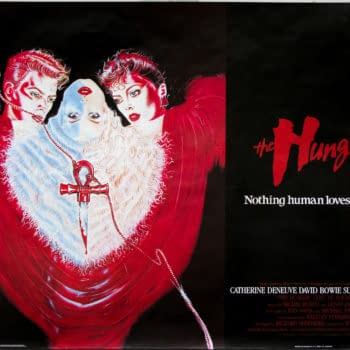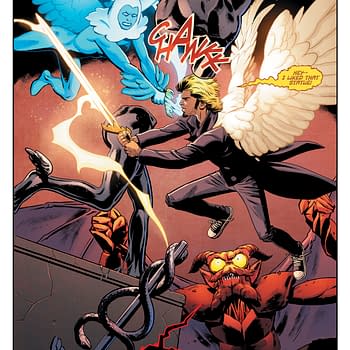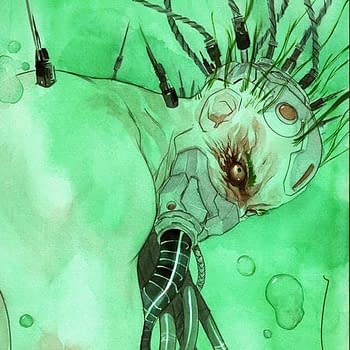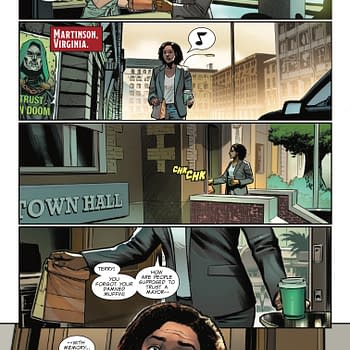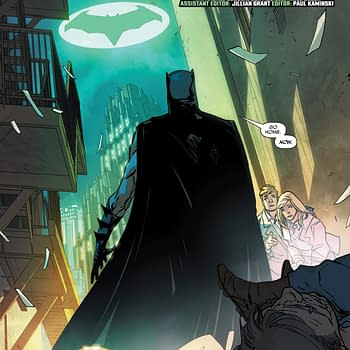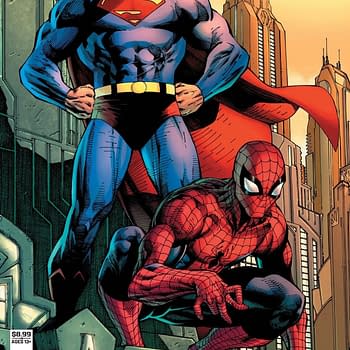Posted in: Comics, Review | Tagged: boom studios, lawgiver, planet of the apes
Political Intrigue and Military Might Collide with the Fantastic Planet of the Apes Omnibus
[rwp_box_recap id="0"]
1968's Planet of the Apes set an entire franchise into motion that would last decades, not only in cinemas, but on television, books, toys, and comic books. And now, BOOM! Studios has collected one of the best narratives set in the Apes franchise into one massive, 502 page tome. Simply titled Planet of the Apes: Omnibus, this gorgeous book should be a welcome addition to any Apes aficionado.
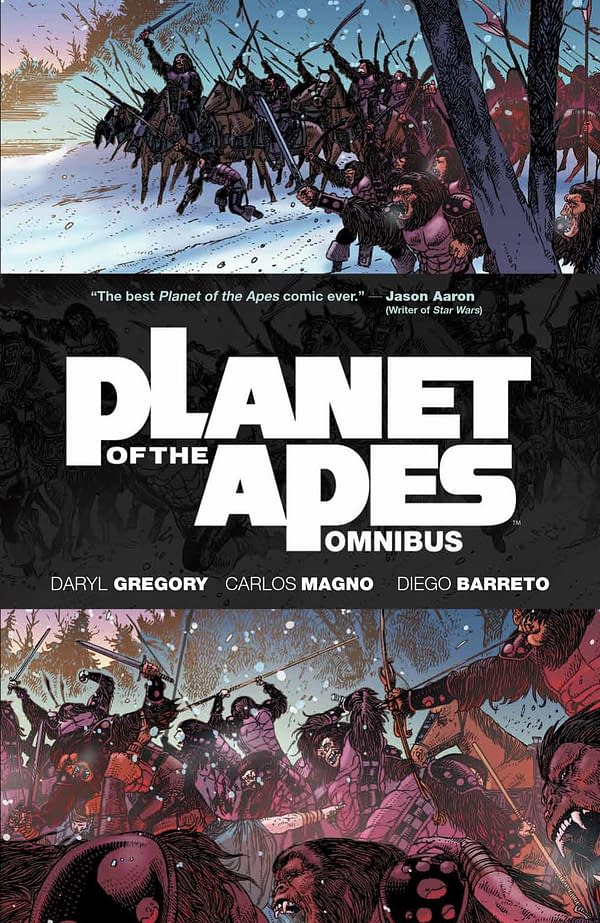
In the original five films, the civilization of the apes is largely derived from the teachings of the Lawgiver, a near mythical messianic figure from the beginning of ape society. During the climax of the original film, Dr. Zaius (Maurice Evans) lays this prophetic bit of lore on Taylor (Charlton Heston):
In later films, we find that the teachings of the Lawgiver were originally intended to bring man and ape together, in a utopian appeal for primate unity. In 1973, the extraordinary John Huston played the Lawgiver in Battle for the Planet of the Apes:
The Planet of the Apes: Omnibus picks up not long after this scene, with the Lawgiver giving a speach about simian unity before being gunned down in plain site by a human assailant. His adopted chimpanzee granddaughter, Alaya, is thrust into a leadership role that demands she find the murderer. Tensions mount in the city of Mak, as the apes rely largely on cheap human labor to keep their society running.
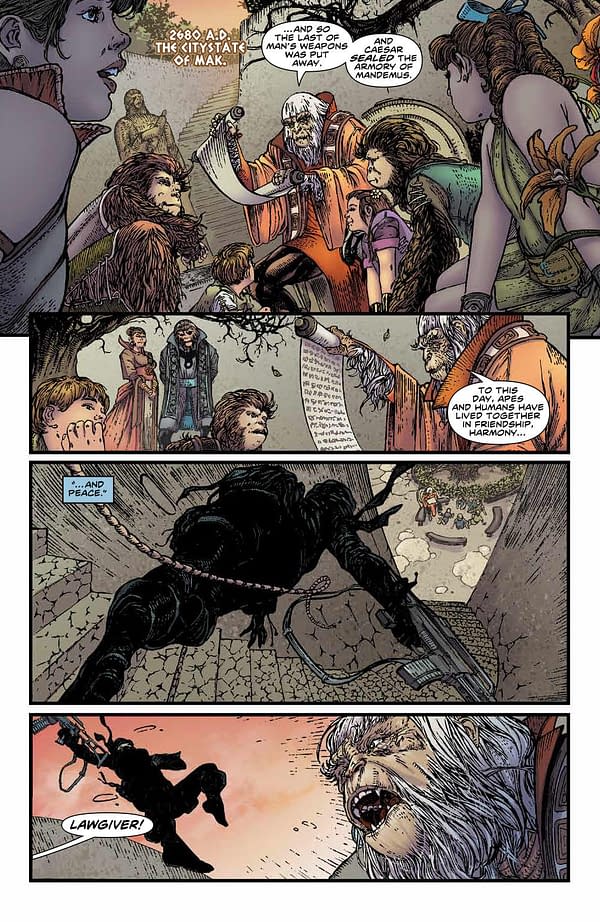
In the outlying human suburb of Southland, the Lawgiver's adopted human granddaughter, Sullivan, tries to keep the piece despite escalating hostilities from the gorilla soldiers of Mak. Making her task difficult, however, is the arrival of a religious zealot, poverty, and the disenfranchised Silent, made up of growing ranks of children who were born without the ability to speak.

Daryl Gregory (Spoonbenders, Pandemonium) does some phenomenal work in this series, weaving together familial dysfunction, racial tension, political intrigue, a murder mystery, and a growing insurgency plot deftly, never once dropping a story thread or leaving a plot angle unresolved. The story is complex, gripping, and tragic – with real world parallels that are hard to ignore. Gregory manages to pay homage to the classic movies with hints at how certain events came to be, and he does so without stooping to the simple prequel playbook.
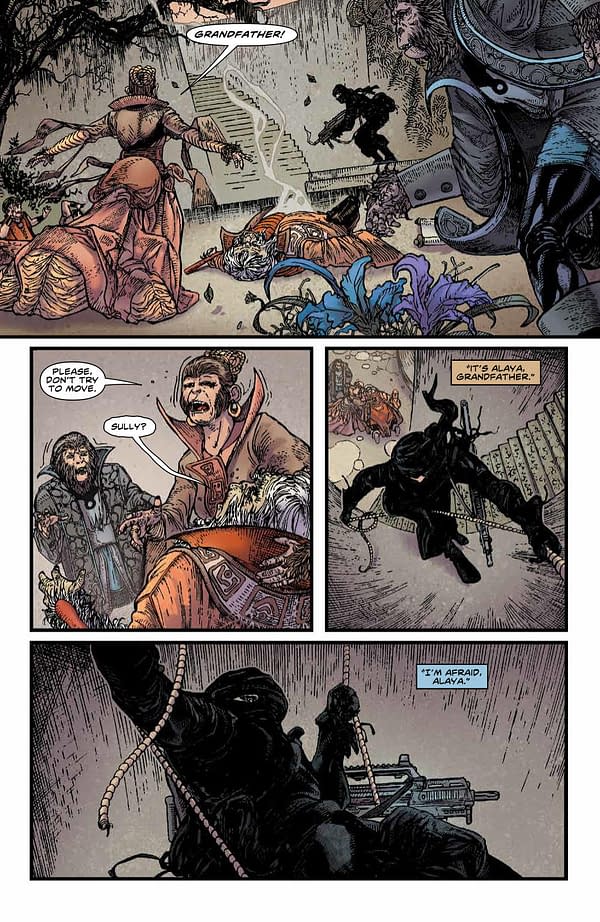
Carlos Magno and Diego Barreto deliver lush, gorgeous art throughout the omnibus, with a level of detail and mastery you don't get treated to very often in comics. The reader has plenty of visual fuel to transport themselves within the story, and I found myself pouring over the panels after my first read-through, something I haven't done in years.

The Planet of the Apes: Omnibus is huge, too. Collecting the original 16 issue series from 2011 alongside Planet Of The Apes Special #1, Planet Of The Apes Spectacular #1, Planet Of The Apes Giant #1, and Planet Of The Apes Annual #1, the book packs in a little over 500 pages. The Omnibus will take hours to finish, too; it's not a casual read to begin with, reading like a future Shakespearean tragedy with an all-simian cast. Highly recommended to anyone who likes a good escapist read, and an absolute must-have for fans of the iconic Apes franchise.
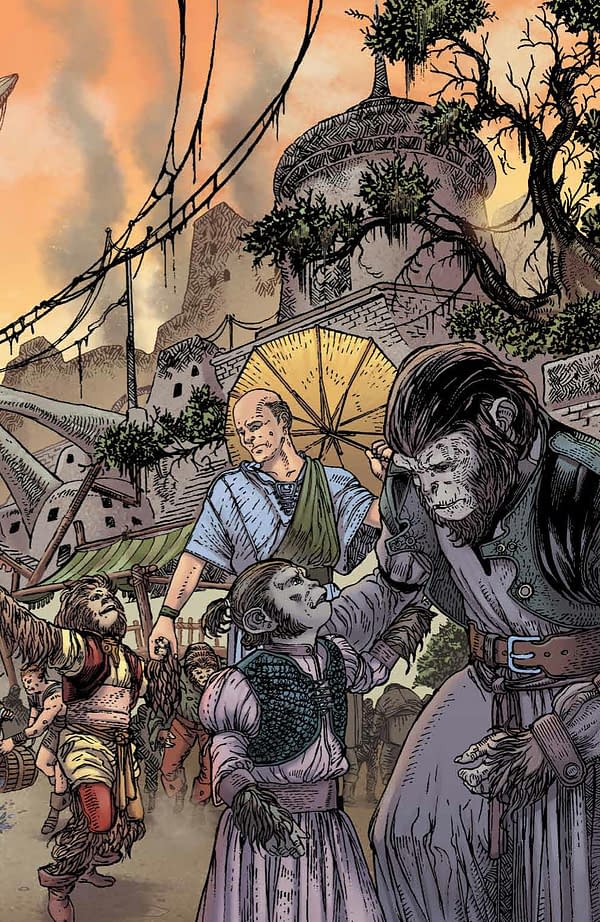
[rwp_box_reviews id="0"]
[rwp_box_form id="0"]




